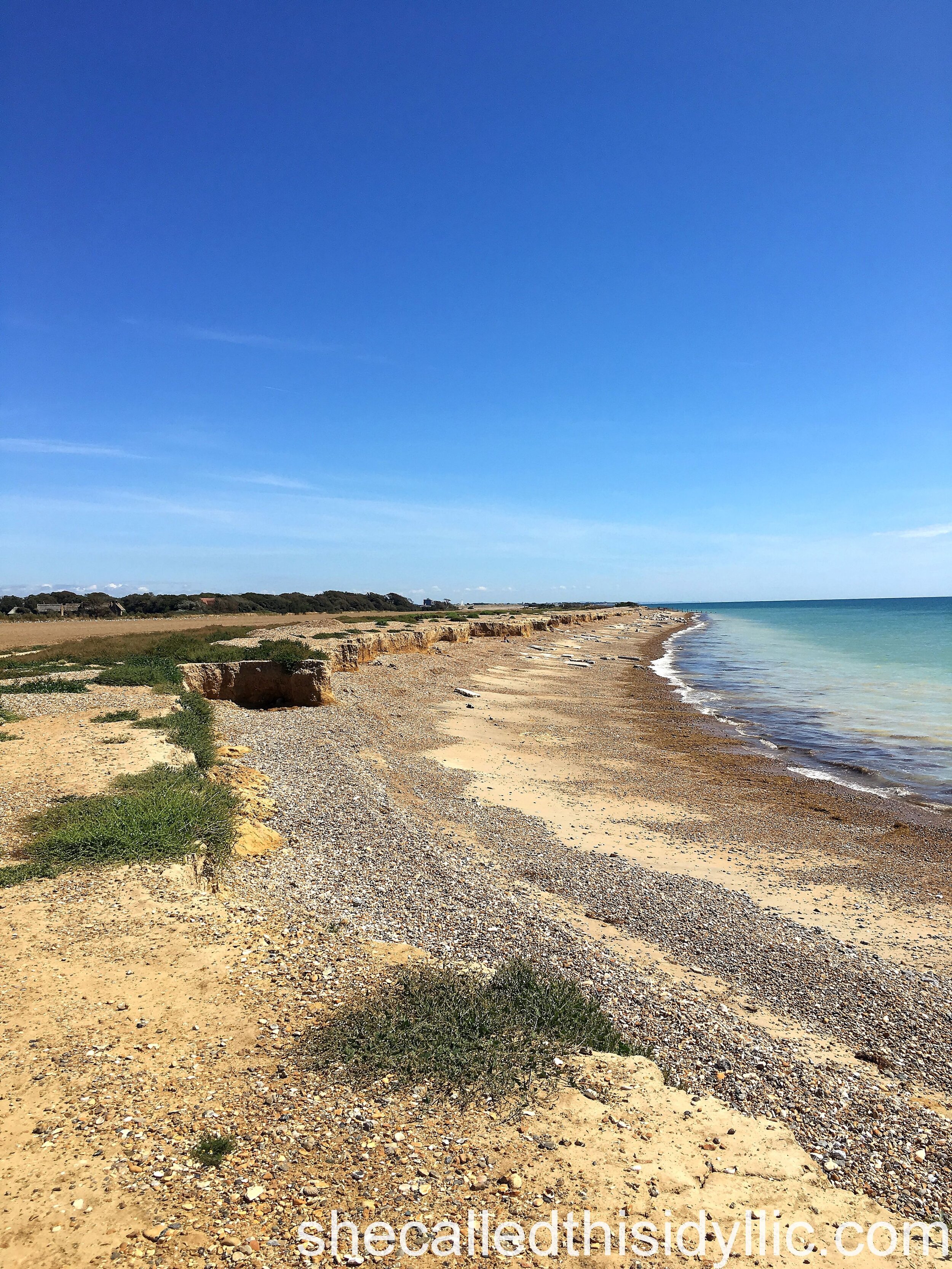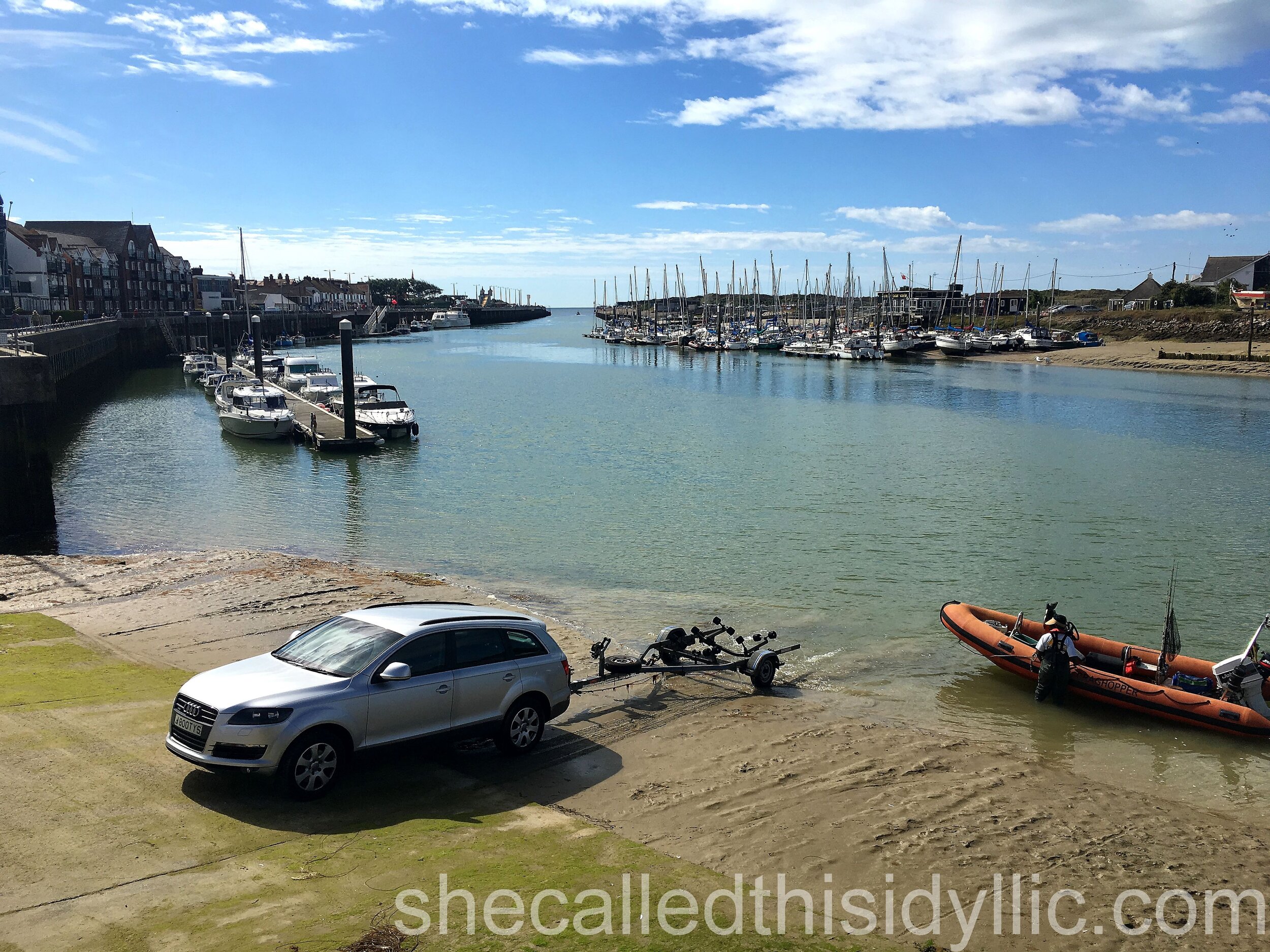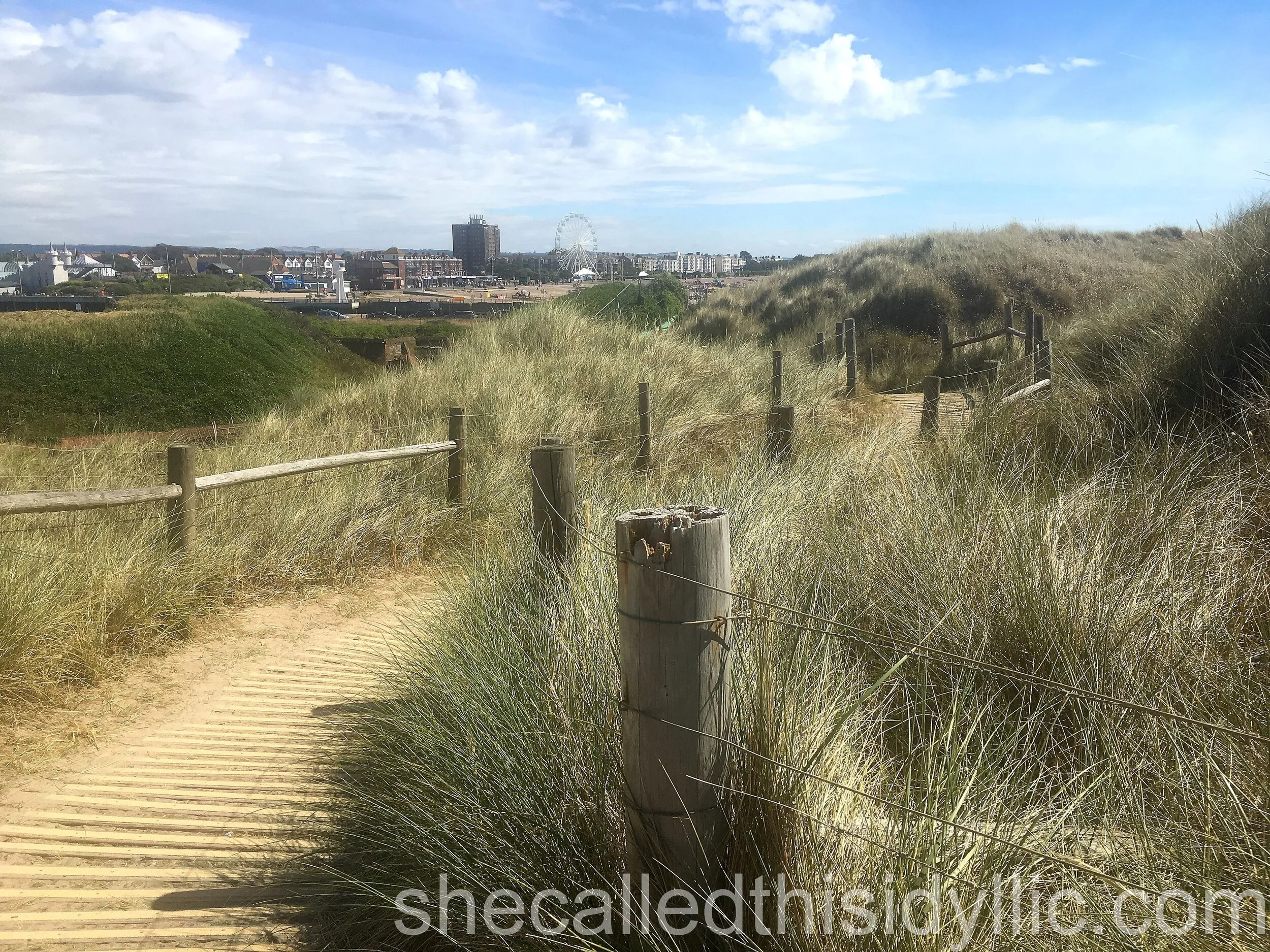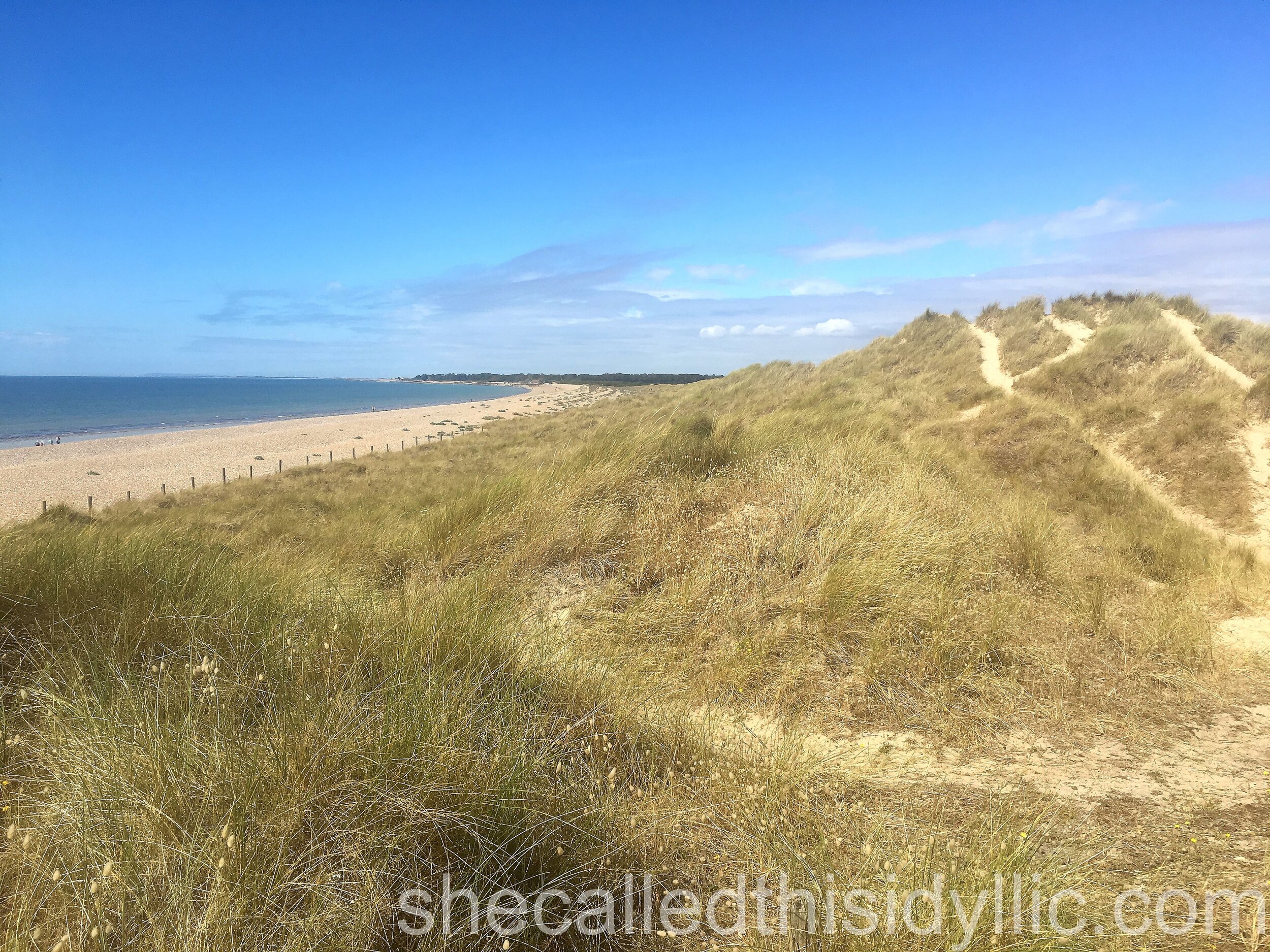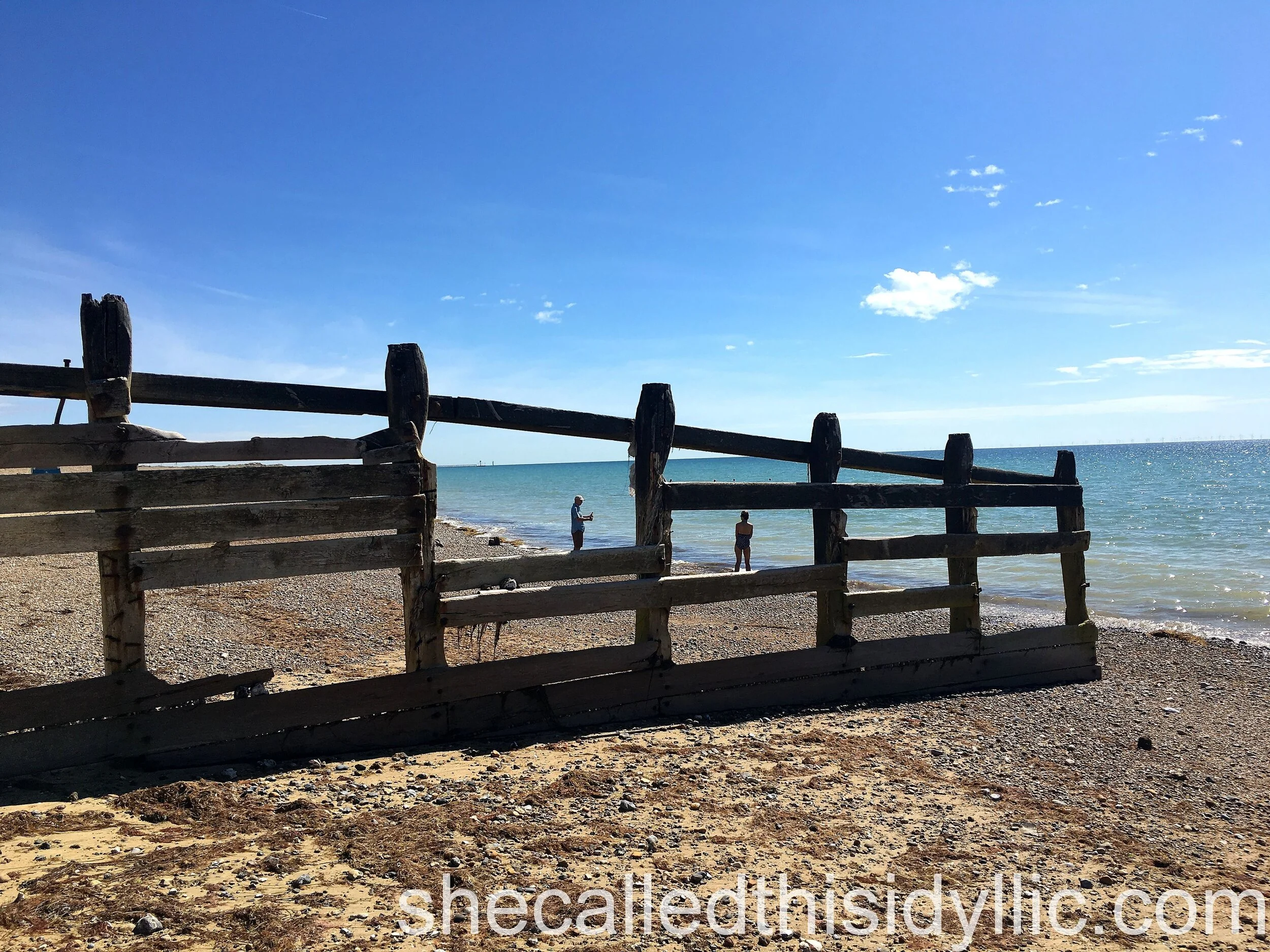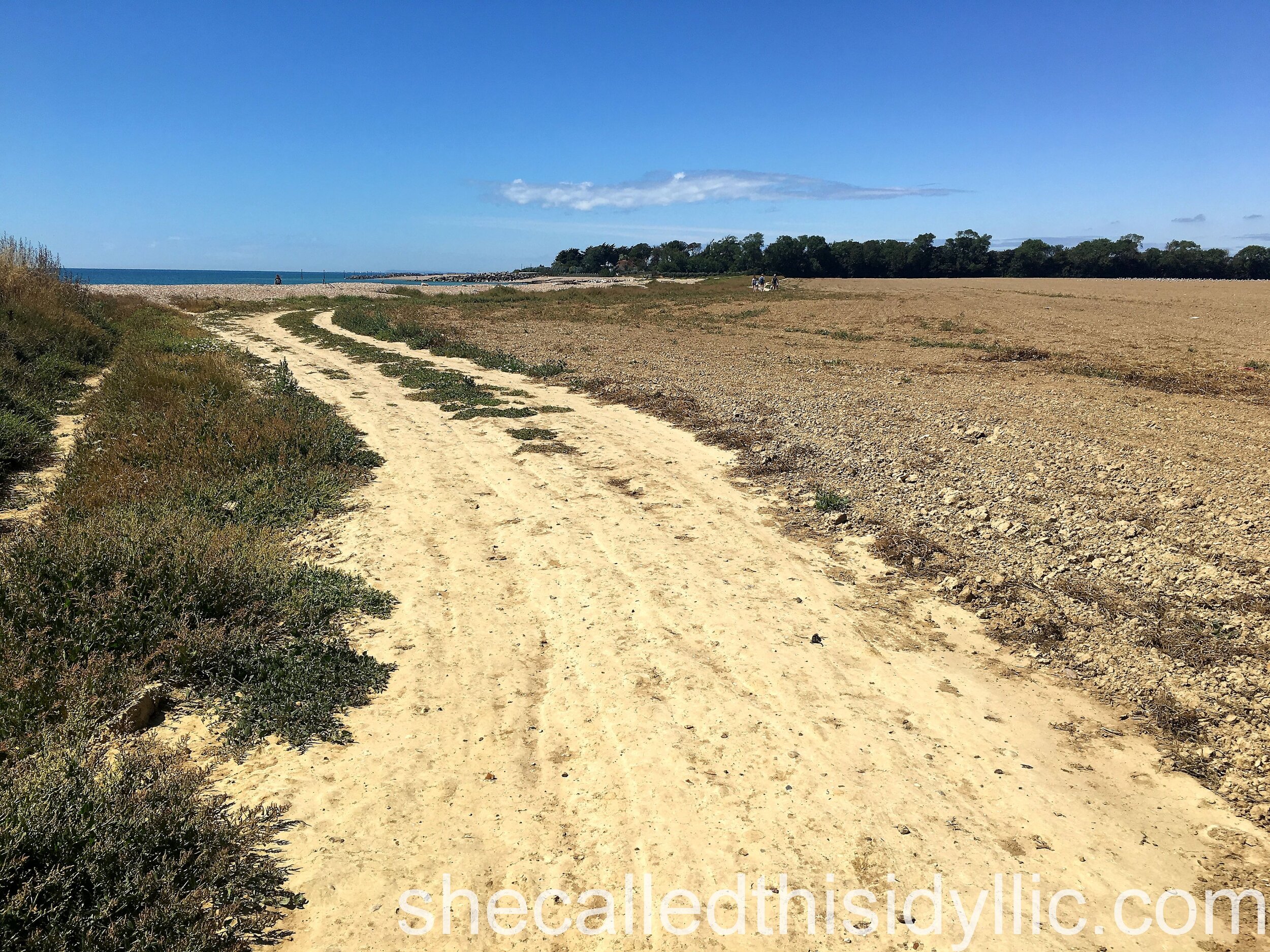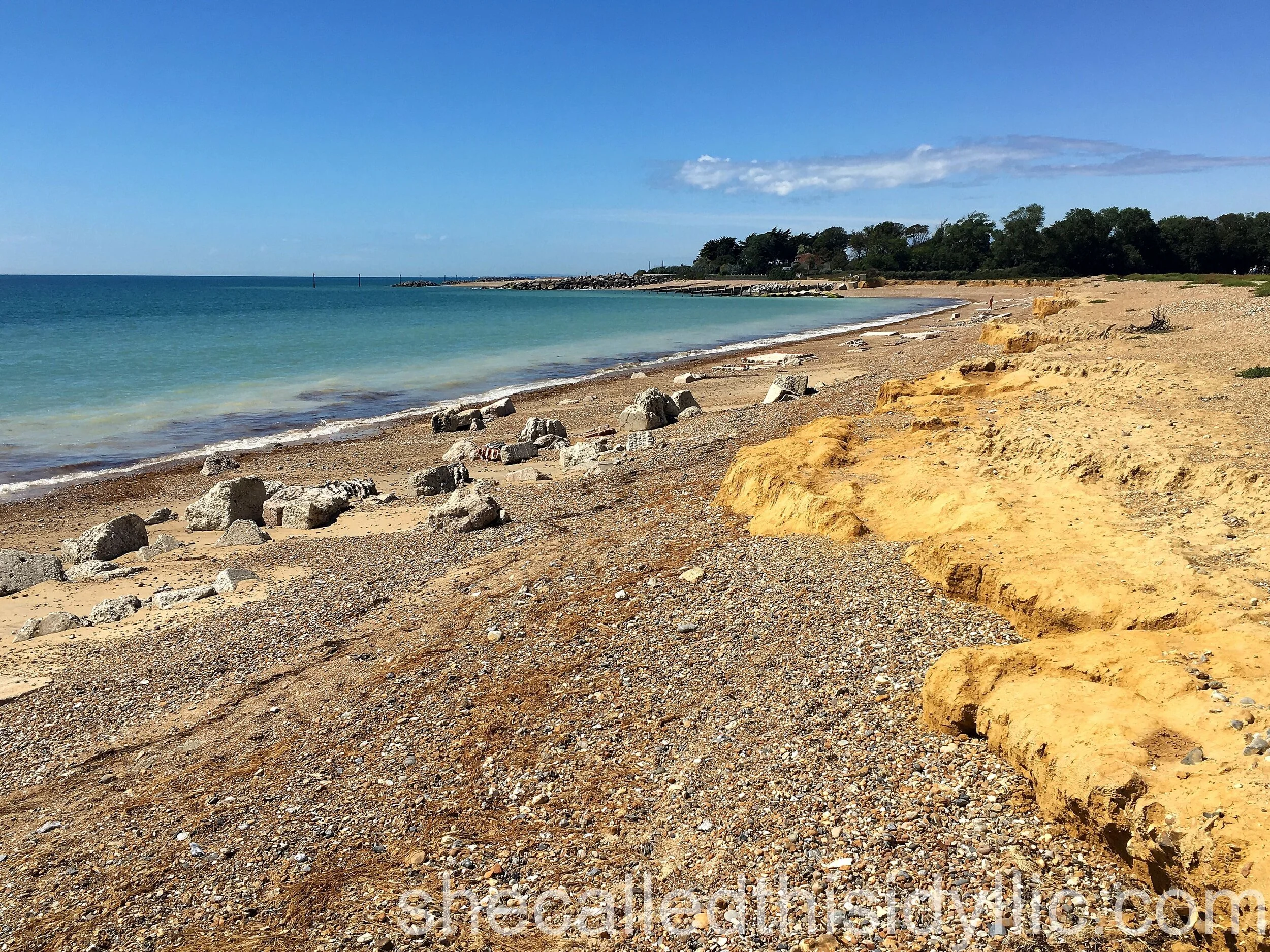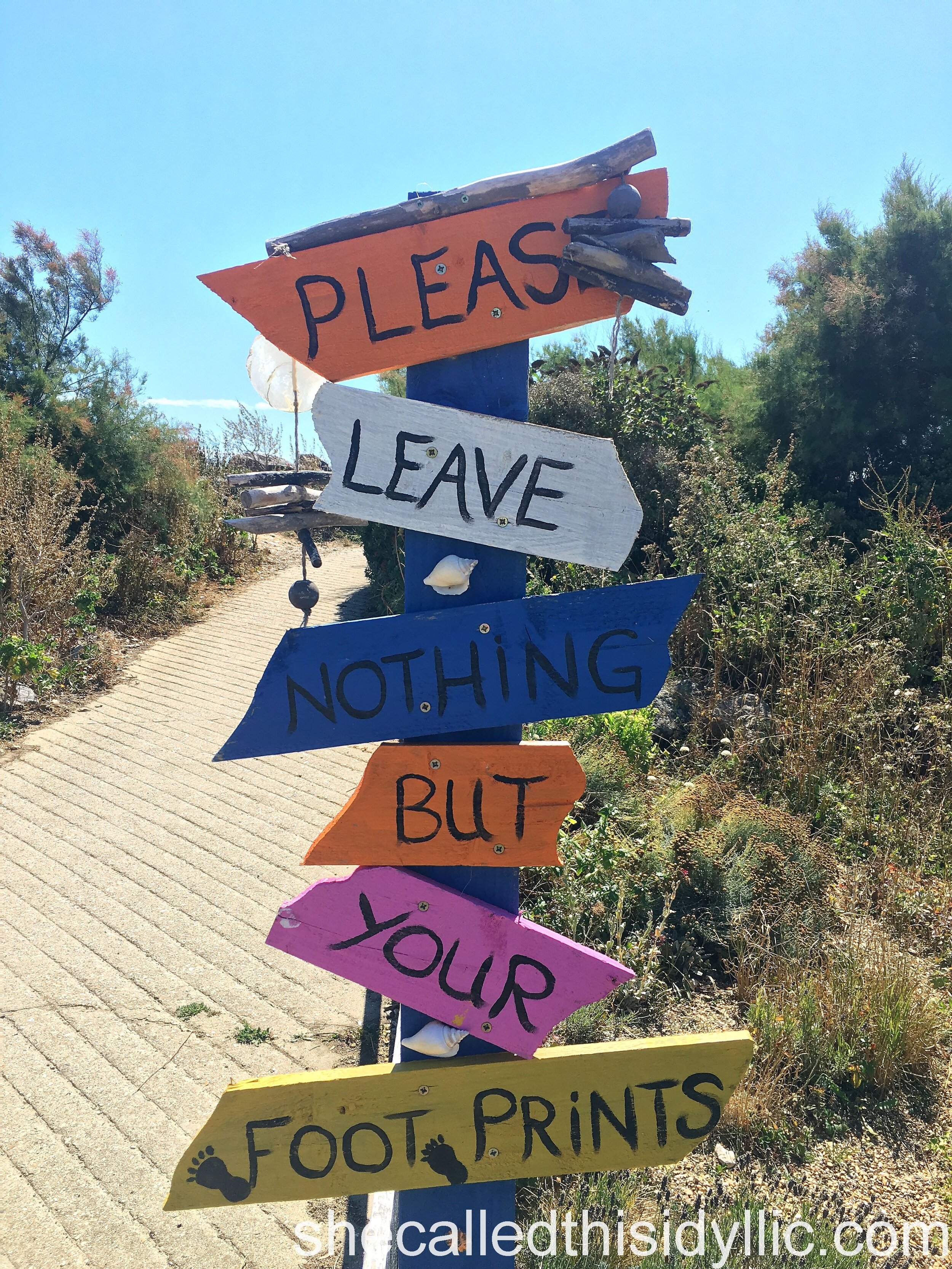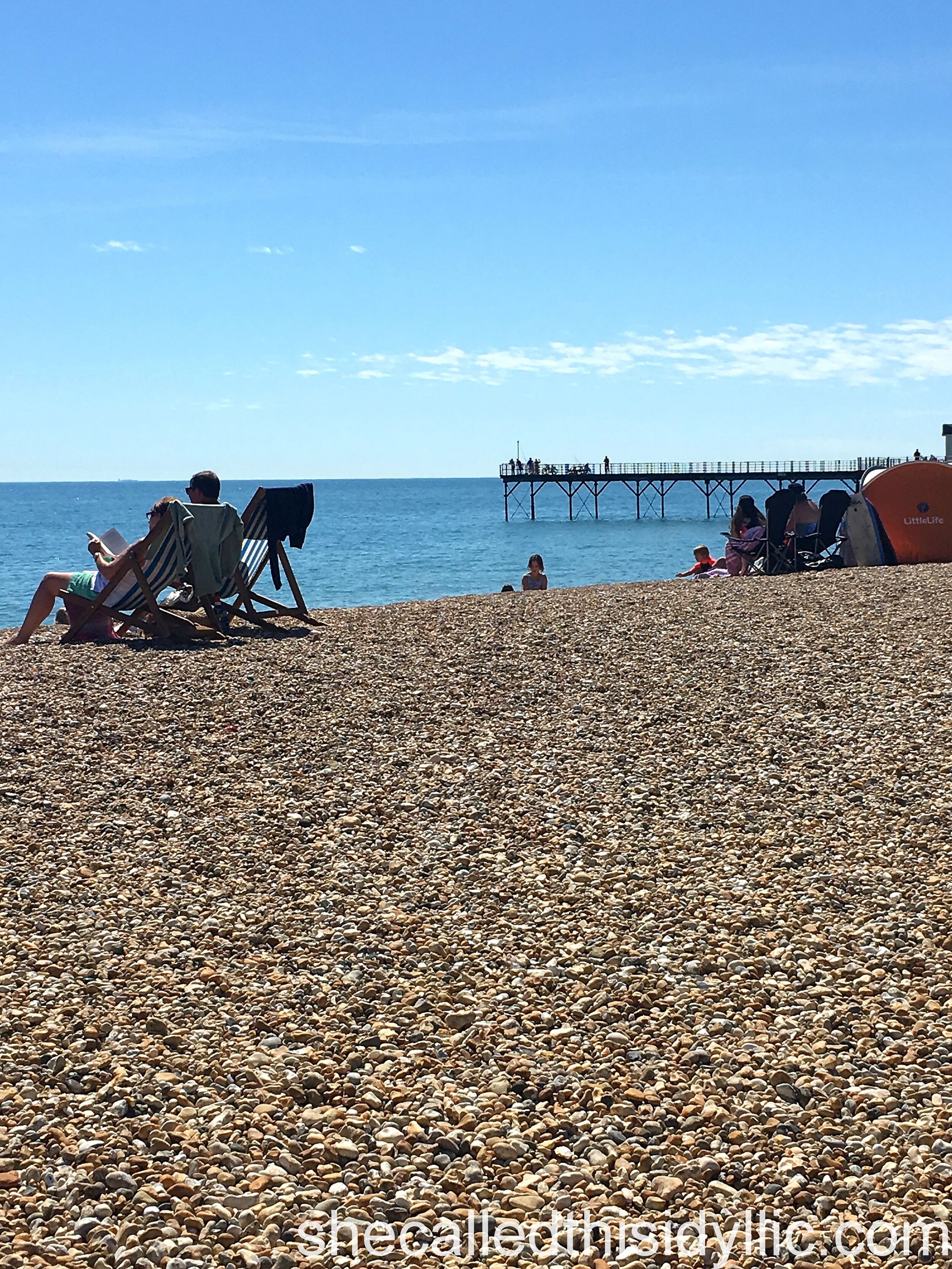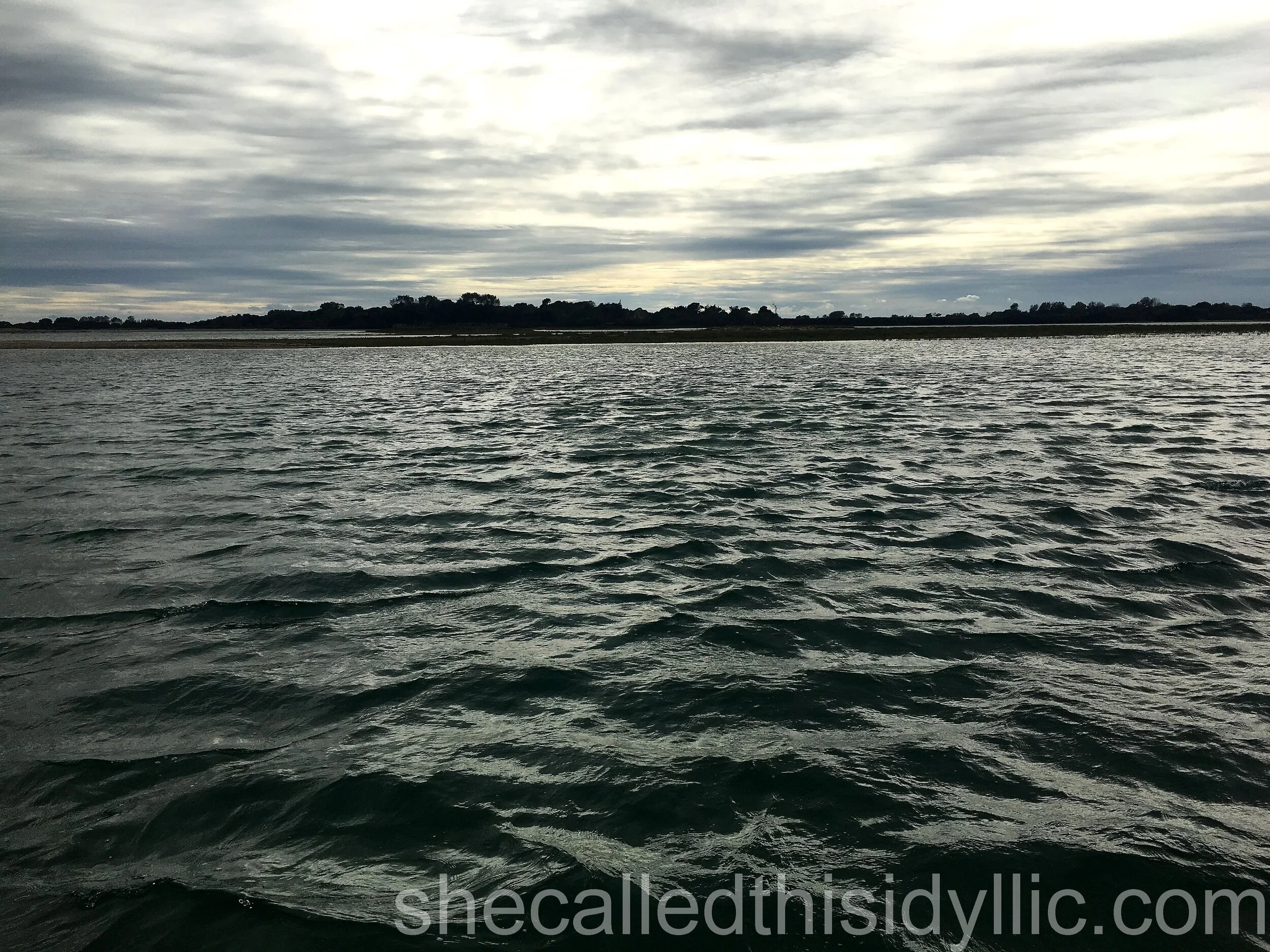Sussex Coastal Walk - Stage Nine - One Day The Poor Will Have Nothing To Eat, But The Rich
A strange title for a walk along the coast, I can hear you thinking. And yes, you would be right.
Because this stage of our walking challenge, the final part of our three day challenge, so to speak, left me with some rather unexpected thoughts alongside the memories of another beautiful day in the sunshine.
We started out at Littlehampton Station and almost straight away found the path taking us up and over the River Arun that we had admired the evening before. For whatever reason, and sadly it rarely is clear, the footbridge did not cause me any vertigo related problems this time around and we sailed over and onto the path down to the beach.
Being such a lovely morning we shared the road with a steady stream of cars heading down to the west beach car park. Much as with the first beach we encountered on this walk, back at Camber Sands, this brought back memories of childhood visits to the Littlehampton sand dunes. These days there is a board walk that takes visitors through the dunes, which appear to have been designated a wildlife sanctuary and as such are fenced off to any closer inspection. The view along the beach as we were guided out of the dunes was breathtaking and we started a very enjoyable walk along the sand, although sadly this soon gave way to the almost inevitable shingle.
Buried in the dunes was Littlehampton Fort, a place I had not heard about before. We managed a quick glimpse as we passed but it appears that this is also fenced off to visitors, which was a shame and surely a missed opportunity in raising its profile.
As we followed the beach around and then subsequently up onto a nicely deserted track, it felt refreshing to be back in the wild, with no buildings or development in sight. The beach itself however changed quite dramatically, with a sudden influx of very old looking wooden fence-like structures at one stage, followed by the very unexpected appearance of large, random blocks of concrete. All, no doubt, related to the ongoing problems that this part of the coast has with erosion, but the concrete blocks in particular seemed rather out of place.
We made our way along to Climping Beach and took a break at the cafe. The sun was well and truly out at this stage and we basked on the beach with copious amounts of sun cream and a well deserved Magnum Classic.
This was followed by further unexpected scenery, as we walked alongside a large ploughed field, located right on the beach front and looking and feeling very Mediterannean under the blue skies. But still, strangely, we found the beach with scattered, concrete blocks which seriously changed the look and feel of the place. Even with the benefit of post-walk research I am unsure of the specific value of these blocks. Perhaps someone will share this with me if they know.
And then, well, this is where my rather indulgent and random title for this post hopefully becomes a little clearer. Because, after our delight at the undeveloped backdrop of the previous mile or two, we came across the private estates. And I use that word in the plural very deliberately.
On the previous stage of our walk we came across one or two private estates, located close to the beach but, in most cases, with permissive “green sward” paths for members of the public to use. But as we came back to a developed beach front just after Climping, well, it changed quite significantly.
The private estates seemed to take over. No “easy to use” permissive paths here. Just mile after mile of private roads, “no access” signs and, in some cases, private beaches with no way around.
As nice as the general area was, and as beautiful and impressive some of the houses were, it felt to me like an area where money and privilege was king. And as one of our friends said when we discussed it later, the properties were no doubt the result of some very impressive pension funds.
We decided to move away from the shingle for a while at Elmer, looking for a hard surface to walk on for a while, and then found it next to impossible to get back to the beach. We walked inland towards Middleton, eventually, finally, finding our way back, after a few false starts and even more “no access” and private signs.
For an area that is clearly very attractive, especially, it would appear, to people of wealth, this was my least favourite part of our walk to date. I found it difficult to find any empathy for the sort of people that made walkers and members of the public feel unwelcome when using roads, paths and beaches that they believe should be for their use alone.
It’s just not right.
Thankfully, when we did finally make it back to the sea front, and had left the last private beach and estate behind us, we found ourselves walking into the outskirts of Bognor Regis. Actually, to be accurate it was Felpham Beach that we mistook for Bognor, mainly due to the large, white presence of the Butlins holiday camp that loomed over the landscape. We reached and then passed this before realising that Bognor was still a further walk away. We noted how the general feeling had changed quickly from the world of “no access” scowls to everything being open to the public, ending up with the more accessible kind of fun we associate with the seaside, all in just a mile or two.
Whatever your views, and I suspect have made mine very clear, we experienced some fascinating extremes on this part of the adventure. The promenade along the steaming hot Bognor sea front was loud and vibrant, with fair ground rides, cafes and fast food places and people of all ages, many, no doubt, staying at Butlins, enjoying their time at the seaside.
We reached the pier, a scaled down and rather sad looking version of what we had seen so frequently in other resorts over the summer, and headed up to the station. It would be wrong of me to say that the streets of Bognor Regis leading to the station were beautiful and well worth visiting. But it is what it is and I was particularly interested in the information boards at the station explaining how the railways had effectively created the resort back in Victorian times.
A fascinating, frustrating and very warm day, but ultimately worthwhile and another eight or so miles towards achieving our challenge,
Stage 9 – Littlehampton Station to Bognor Regis Pier
Date of walk - 6th August 2020
Distance walked 8.25 miles / 13.28 km
Floors climbed (using Apple Health app.) 2 floors
Ongoing totals 88.59 miles / 142.56 km / 290 floors
